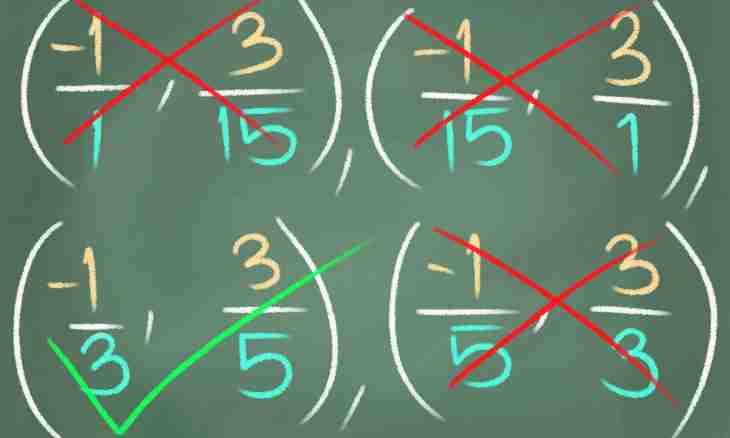Starting the solution of a system of the equations, deal with what it the equations. Ways of the solution of the linear equations are rather well studied. The nonlinear equations most often hesitate. There are only one special cases, each of which is almost individual. Therefore studying receptions of the decision should be begun with the equations linear. Such equations can be solved even purely algorithmically.
Instruction
1. Begin process of training with studying ways of the solution of a system of two linear equations with two unknown of X and Y by process of elimination. a11*X+a12*Y=b1 (1); a21*X+a22*Y=b2 (2). Coefficients of the equations are designated by the indexes specifying their locations. So the coefficient of a21 emphasizes the fact that it is written down in the second equation on the first place. In the standard designations the system registers the equations located the friend under the friend in common designated by the brace on the right or at the left (for more details see fig. 1a).
2. Numbering of the equations is any. Choose from them the simplest, for example in what faces coefficient one of variables 1 or at least an integer. If this equation (1), then further express, say, unknown Y through X (a case of an exception Y). For this purpose transform (1) to a type of a12*Y=b1-a11*X (or a11*X=b1-a12*Y at an exception of X)), and then Y=(b1-a11*X)/a12. Having substituted the last in the equation (2) write down a21*X+a22 * (b1-a11*X)/a12=b2. Solve this equation concerning X. a21*X+a22*b1/a12-a11*a22*X/a12=b2; (a21-a11*a22/a12) *X=b2-a22*b1/a12; X = (a12 * b2-a22*b1) / (a12*a21-a11*a22) or X = (a22 * b1-a12*b2) / (a11*a22-a12*a21). Having used the found communication between Y and H, finally receive also the second unknown Y= (a11 * b2-a21*b1) / (a11*a22-a12*a21).
3. If the system was set with concrete numerical coefficients, then and calculations would be less bulky. But the common decision gives the chance to consider the fact that it denominators at the found unknown is made are identical. And at numerators some regularities of their construction are looked through. If the dimension of a system of the equations is bigger two, then the method of an exception would lead to very bulky calculations. That to avoid them, purely algorithmic ways of the decision are developed. The simplest of them Kramer's algorithm (Kramer's formulas). For their study it is necessary to learn what is the general system of the equations from n of the equations.
4. System n of the linear algebraic equations with n unknown has an appearance (see fig. 1a). In it aij – coefficients of a system, xj – unknown, bi – free members (i=1, 2..., n; j=1, 2..., o). Compactly such system can be written down in the matrix AH=V form. Here And – a matrix of coefficients of a system, X – a matrix column of unknown, B – a matrix column of free members (see rice 1b). By Kramer's method each unknown xi = ∆ i / ∆ (i=1.2 …, n). ∆ matrixes of coefficients call determinant the main thing, and ∆i auxiliary. For each unknown the auxiliary determinant is found by means of replacement of i-go of a column of the main determinant by a column of free members. In detail Kramer's method for a case of systems of the second and third order is presented in fig. 2.

